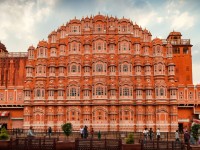Tourism Destination Awareness
Destination is the basic component of tourism. Identifying and capturing the essence of the place is vital for the tourism business to do well. If an attractive place is turned into a destination, the place generates high revenue from tourism.
Today, Destination Management is an important subject in tourism studies. It focusses on the development and management of destinations to provide highly satisfying experience to the visitors without hampering the local culture and environment.
What is a Tourist Destination?
A tourist destination can be a city, town, or other area. It is dependent on the revenues accruing from tourism. It is marketed or markets itself as a place for tourists to visit. It may contain more than one tourist attractions. For example, Roros, Norway is a destination with the label of mining town since last 85 years.
How Can a Destination Attract Tourists?
A tourist destination has certain characteristics that attract tourists to spend time there. It can attract tourists for its inherent or exhibited natural or cultural value, historical significance, flora and fauna, natural or built beauty, offering leisure, adventure and amusement.
The following factors shape the destination appeal −

The Five A’s
The following five A’s define the tourist needs and demands −
Accessibility
It is the ability to reach to a place of destination by opting one or multiple means of transportation. The transportation should be timely, convenient, inexpensive, and safe. Today there are various means of transportation like airlines, railways, surface transportation, and water transportation.
Accommodation
It is a place where the tourists can avail food and shelter on payment. Today, a wide range of accommodations are available ranging from a basic budget accommodation to elite class seven-star hotel suites.
Attraction
It is a place of interest where tourists visit, typically for its inherent or exhibited, natural or cultural value, historical significance, or natural or artificial beauty. The attraction creates a desire to travel to a specific tourist destination. They also offer leisure, comfort, adventure, or amusement.
For example, Paris draws tourists by offering Fashion as attraction.
Activities
Activities are what the tourists perform for fun and amusement. For example, boating, scuba diving, canoeing, camel riding, and visiting a place.
Amenities
Amenities refer to the beneficial services offered to the tourists like visitor information centers, telecommunications, roads, drinking water, toilet blocks, garbage bins, etc.
Types of Tourist Destinations
There are various types of destinations as given below −
Centered Destination
It is the most common type of tourist destination, where tourists spend most of their time on occasional excursions to nearby places of attraction. For example, Andaman Island is a centered destination.
Base Destination
It refers to that type of destination where tourists need to travel and explore surrounding region.
For example, Sossusvlei Desert Camp of Sesriem is a base destination from where tourists can explore the nearby desert mountain dunes and Sesriem river canyon.
Multi-Centre Destination
Here the destination comprises two or more destinations of equal importance. For example, India is a multi-center destination where each Indian state or region offers different culture, nature, and culinary experience.
Touring Destination
A touring destination refers to a place to visit as part of linear itinerary.
Transit Destination
It is a place of a brief halt en-route while the tourists are heading towards the final destination.
For example, Abu Dhabi is a transit destination where tourists take a short break for going to Cape Town, South Africa.
Building Online Destination Awareness
Exploiting the widespread reachability of the internet, the tourism businesses need to build their online presence not only for offering various tours but for creating destination awareness as well.
Destination websites act as the gateway for tourism information. They can also provide a number of services such as promoting local attractions, culture, and activities, list of the local ancillary tourism services, and provide regional historical and geographical information about the destinations. This helps to shape the curiosity of the prospective tourists and can bring momentum in tourism.
- Category:
- Tourism
- 13 May, 2023
- 904 views
- No comments






